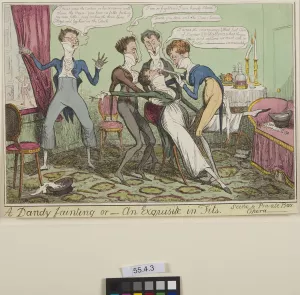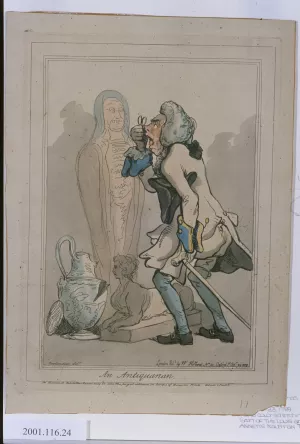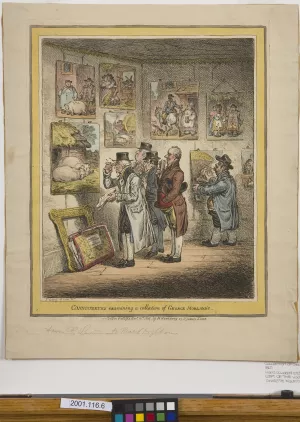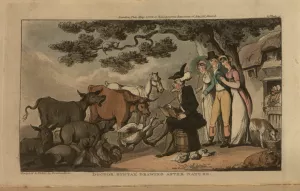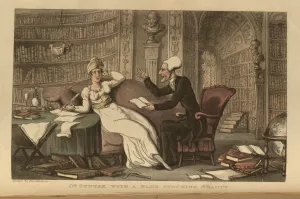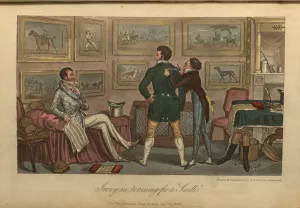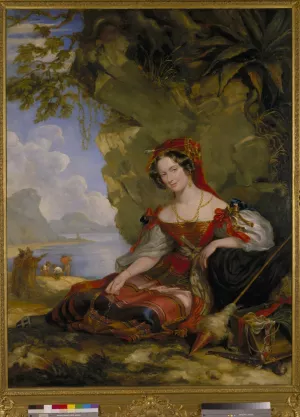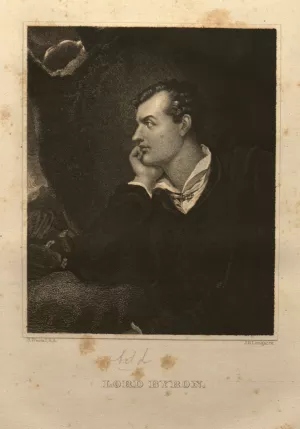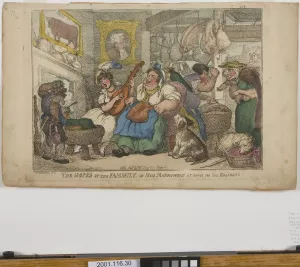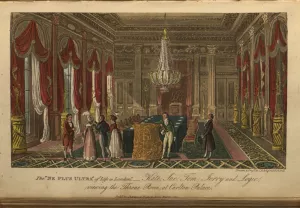This gallery is a virtual stroll through the crowds of Romantic Britain in search of personifications of artistry. As an exercise in flânerie, this gallery juxtaposes and assembles for our view those figures who fashion themselves as artistic through their clothing, conduct, and gestures. These figures demonstrate the diverse ways in which artistic identity was being codified for appropriation and commodified for consumption, and so point to the multiplying intersections of art and commerce. Although the Romantic artist is often thought of as a stable embodiment of creative genius and sensibility who creates his artistic persona to elevate himself above the commercial masses, the growth of the art market during the Romantic period actually encouraged a wider range of artistic identities as professional artists began to specialize in diverse practices (see David Solkin's Painting for Money; New Haven: Yale UP, 1993). The people represented here take part in this fracturing of artistic identity by establishing themselves as experts or practitioners of the arts, or even by creating their own selves as works of art or objects of aesthetic pleasure. These figures suggest that the Romantic era offered new freedom in creative self-fashioning; yet, as Michel Foucault reminds us, such efforts to create an aesthetics of the self are always bound by outside forces of social control (see Foucault's “What is Enlightenment”). The figures represented here use commodities to fashion themselves as artistic personas, but in doing so they have become types circulating in a commodity culture, including the visual culture from which the images in this gallery are drawn. Many of these images are satirical, demonstrating the ways in which artistic types were evaluated and critiqued by their peers; however, even those figures that are not successful formulations of artistry signify the developing, Romantic appetite for self-creation. Finally, this gallery also points to the practices by which these types were created. Following Foucault, we might think of these practices, from fashion and portraiture to tourism and collection, as technologies of the self (see Foucault's “Technologies of the Self”). The aestheticized selves produced by these technologies are both individual formulations and social constructions, both art objects and art consumers.

